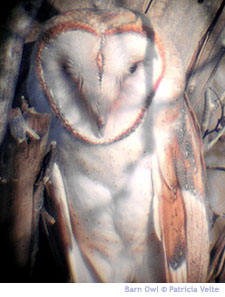LOCATION: Fort Reno, El Reno, OK
Contributed by Jimmy Woodard and Max Fuller
35.334490 N 98.2393W
General Info: Historic Fort Reno was a military post from 1875 through 1947. The U.S. Department of Agriculture took it over in 1947 and now administers the roughly 7,000 acres as an agricultural research station. There was a prisoner of war camp constructed at the Fort in 1943. German and Italian POWs are buried in the cemetery on the west end of the facility. The Fort’s visitor center and main gate are open Monday – Friday from 10 a.m. to 5 p.m. and holidays / weekends from 10 a.m. to 4 p.m.
Directions: Take the Business I-40 exit off I-40 on the west side of El Reno. Go north about 1/2 mile, turn left then right into the Fort. From Highway 81 and Old Highway 66 / Bus 40 in El Reno, go west on Old Hwy 66 about 4 miles, turn right and immediately right into the Fort.
 Birding Locations: Only the main road, main compound, cemetery road and cemetery are open to the public. Please do not cross fences or enter locked gates without permission.
Birding Locations: Only the main road, main compound, cemetery road and cemetery are open to the public. Please do not cross fences or enter locked gates without permission.
Spring: Look for Great Blue Heron, Great Egret, Cattle Egret, Green Heron, Canada Goose, Wood Duck Teal, Shoveler, Mallard, and Gadwall at the pond on the main road or in flight. Watch for migrants such as Swainson’s Hawk, American Golden-Plover, Upland Sandpiper, Northern Rough-winged Swallow, Ruby-crowned Kinglet, Orange-crowned and Yellow Warbler; Chipping, Clay-colored and Vesper Sparrows, and Yellow-headed Blackbirds.
Summer: Local breeders include Red-tailed Hawk, Mississippi Kite, American Kestrel, Northern Bobwhite, Killdeer, Mourning Dove, Yellow-billed Cuckoo; Barn, Barred and Great Horned Owls; Red-headed, Red-bellied and Downy Woodpeckers; Eastern Phoebe; Great-crested and Scissortail Flycatchers; Western and Eastern Kingbird; Cliff and Barn Swallows, Blue Jay, American Crow, Carolina Chickadee; Carolina, Bewick’s and House Wren; Glue-gray Gnatcatcher, Eastern Bluebird, American Robin, Northern Mockingbird, European Starling; Bell’s, Warbling and Red-eyed Vireo; Northern Cardinal, Blue Grosbeak; Indigo and Painted Bunting; Dickcissel; Cassin’s, Field and Lark Sparrows; Red-winged Blackbirds, Eastern Meadowlark, Great-tailed Grackle, Brown-headed Cowbird, Baltimore Oriole, House Finch, and House Sparrow.
Winter: Look for Northern Harrier, Rough-legged Hawk and Merlin in the fields. Short-eared Owls frequent the fields along the entrance road. In the trees of the main compound and cemetery, look for Northern Flickers, Tufted Titmouse, Golden-crowned Kinglet, Cedar Waxwing, Yellow-rumped Warbler, White-throated, White-crowned, Harris’s, and Song Sparrows. Also watch for Dark-eyed Junco, Loggerhead Shrike, Lapland Longspur, Brewer’s Blackbird, and American Goldfinch.
The unofficial bird list for Fort Reno, updated as of 6-24-2006, stands at 170 species.
The list details sightings by Jimmy Woodard, Max Fuller and Nealand Hill unless indicated by ■ (unconfirmed sightings on list provided by Fort Reno) or ▲ (observed by Dr. Donald Winslow, director of conservation biology, St. Gregory’s University, and students).
Greater White-fronted Goose Snow Goose■ Canada Goose Wood Duck Gadwall American Wigeon Mallard Blue-winged Teal Northern Pintail■ Green-winged Teal Canvasback ■ Redhead ■ Ring-necked Duck Greater Scaup ■ Bufflehead ■ Hooded Merganser ■ Red-breasted Merganser Ring-necked Pheasant ■ Wild Turkey Northern Bobwhite Pied-billed Grebe American White Pelican Double-crested Cormorant American Bittern Great Blue Heron Great Egret Snowy Egret Little Blue Heron Cattle Egret Green Heron Black-crowned Night-Heron■ White-faced Ibis ■ Roseate Spoonbill ■ Turkey Vulture Mississippi Kite Northern Harrier Cooper’s Hawk Red-shouldered Hawk■ Swainson’s Hawk Red-tailed Hawk Ferruginous Hawk Rough-legged Hawk American Kestrel Merlin Prairie Falcon Sora ■ American Coot Sandhill Crane American Golden-Plover Semipalmated Plover ■ Killdeer American Avocet ■ Greater Yellowlegs■ Lesser Yellowlegs■ Solitary Sandpiper■ Spotted Sandpiper Upland Sandpiper |
Semipalmated Sandpiper Western Sandpiper■ Least Sandpiper White-rumped Sandpiper■ Stilt Sandpiper■ Wilson’s Snipe Wilson’s Phalarope■ Franklin’s Gull■ Ring-billed Gull Rock Pigeon Mourning Dove Yellow-billed Cuckoo ▲ Greater Roadrunner Barn Owl Great Horned Owl Snowy Owl ■ Barred Owl Short-eared Owl Common Nighthawk Chimney Swift Belted Kingfisher ■ Red-headed Woodpecker Red-bellied Woodpecker Yellow-bellied Sapsucker Ladder-backed Woodpecker■ Downy Woodpecker Hairy Woodpecker Northern Flicker Pileated Woodpecker■ Eastern Phoebe Great Crested Flycatcher Western Kingbird Eastern Kingbird Scissor-tailed Flycatcher Loggerhead Shrike Bell’s Vireo ▲ Warbling Vireo Red-eyed Vireo Blue Jay American Crow Horned Lark Purple Martin Northern Rough-winged Swallow Cliff Swallow Barn Swallow Carolina Chickadee Black-capped Chickadee■ Tufted Titmouse White-breasted Nuthatch Brown Creeper Carolina Wren Bewick’s Wren House Wren Winter Wren Golden-crowned Kinglet Ruby-crowned Kinglet Blue-gray Gnatcatcher |
Eastern Bluebird Townsend’s Solitaire■ American Robin Northern Mockingbird Brown Thrasher European Starling Cedar Waxwing Orange-crowned Warbler Yellow Warbler Yellow-rumped Warbler Louisiana Waterthrush ▲ Common Yellowthroat ▲ Summer Tanager■ Spotted Towhee Cassin’s Sparrow ▲ American Tree Sparrow■ Chipping Sparrow Clay-colored Sparrow Field Sparrow Vesper Sparrow Lark Sparrow Savannah Sparrow Grasshopper Sparrow Fox Sparrow Song Sparrow Lincoln’s Sparrow White-throated Sparrow Harris’s Sparrow White-crowned Sparrow Dark-eyed Junco Lapland Longspur Smith’s Longspur■ Northern Cardinal Blue Grosbeak Indigo Bunting Painted Bunting Dickcissel Red-winged Blackbird Eastern Meadowlark Western Meadowlark Yellow-headed Blackbird Brewer’s Blackbird Common Grackle Great-tailed Grackle Brown-headed Cowbird Orchard Oriole ▲ Baltimore Oriole Purple Finch House Finch Pine Siskin American Goldfinch Evening Grosbeak House Sparrow▲ = observed by Dr. Donald Winslow, director of conservation biology, St. Gregory’s University ■ = |
Related links:
